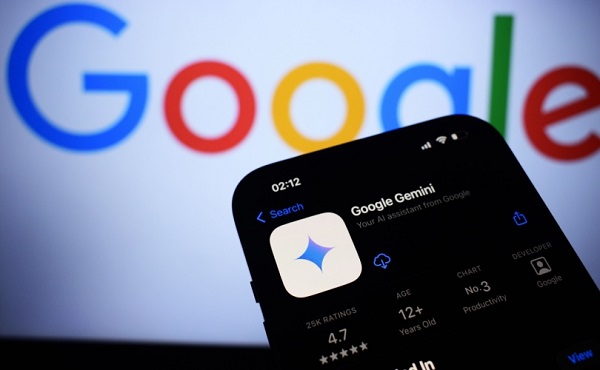COVID-19
Fauci’s Top Advisor May Have Illegally Evaded Records Requests, Experts Say

 From the Daily Caller News Foundation
From the Daily Caller News Foundation
“These revelations are startling,” Judicial Watch senior attorney Michael Bekesha told the DCNF. ” It appears as though Dr. Morens and maybe others at NIH sought to circumvent, if not violate, the law by using personal email accounts and deleting emails.”
A top advisor for former National Institute of Allergy and Infectious Diseases (NIAID) Director Anthony Fauci may have illegally taken actions to avoid records requests, experts told the Daily Caller News Foundation.
David Morens, a former senior adviser to Fauci, both deleted emails to evade Freedom of Information Act (FOIA) requests and told people multiple times to contact him at his personal email address to get around such requests, according to emails released by the House Oversight Committee on Wednesday. Morens, in his emails, also suggested that Fauci used his private email address to conduct government business.
“This is very illegal,” Matthew Hardin, a lawyer specializing in issues related to FOIA, told the DCNF.
“The Federal Records Act has strict requirements for preserving agency records in the agency’s custody for various reasons, including for purposes of facilitating the agency’s compliance with the Freedom of Information Act,” he continued. “This means that anybody conducting agency business through a ‘secret’ back channel or through Gmail is still creating a federal record, even if they are wrongfully concealing that record on a personal account instead of the government’s custody.”
In addition to using his private email address to communicate with others with the express purpose of getting around FOIA requests, Morens instructed others to reach Fauci at a private address for similar reasons.
In an April 2021 email to Peter Daszak, the president of EcoHealth Alliance, Morens said that there is “no worry about FOIAs” as he can “either send stuff to Tony [Fauci] on his private email, or hand it to him at work or at his house.”
“He is too smart to let his colleagues send him stuff that could cause trouble,” Morens continued.
“These revelations are startling,” Judicial Watch senior attorney Michael Bekesha told the DCNF. ” It appears as though Dr. Morens and maybe others at NIH sought to circumvent, if not violate, the law by using personal email accounts and deleting emails.”
Bekesha said Morens’ conduct could run afoul of the Federal Records Act, the Freedom of Information Act and the Privacy Act.
Daszak’s EcoHealth has received scrutiny for working with the Wuhan Institute of Virology, which some have posited was where the COVID-19 pandemic originated. The Federal Bureau of Investigation and the Department of Energy now both believe that COVID-19 likely emerged from a Chinese lab. EcoHealth was cut off from federal funding on May 15 in part due to issues with its monitoring of work done at the Wuhan Institute of Virology.
🔥 🔥 🔥
Chairman Comer GRILLS Dr. Fauci’s Senior Advisor, Dr. David Morens, who was caught deliberately obstructing @COVIDSelect’s investigation into the origins of COVID-19 to protect Dr. Fauci. pic.twitter.com/mWwAq3iDvd
— Oversight Committee (@GOPoversight) May 22, 2024
Beyond using personal emails to evade possible FOIA requests, Morens also said that he worked with his agency’s FOIA office to delete records of his communications.
“[I] learned from our foia [sic] lady here how to make emails disappear after I am foia’d [sic] but before the search starts, so [I] think we are all safe,” Morens wrote in a February 2021 email. “Plus [I] deleted most of those earlier after sending them to gmail [sic],” he continued.
Morens sent multiple emails between June 2020 and October 2021 suggesting that he’d deleted his government communications. “We are all smart enough to know to never have smoking guns, and if we did we wouldn’t put them in emails and if we found them we’d delete them,” he said in one email.
“The right of citizen access and the transparency of public records is constitutional and enshrined in Article I, Section 9, Clause 7 of the U.S. Constitution—within the powerful Appropriations clause,” Open The Books CEO Adam Andrzejewski told the DCNF. “Such an important and significant admission of the destruction of public records begs a non-partisan, criminal investigation,” he continued.
“The question now is how often are the feds working to hide or destroy information that belongs in the public record? Is it limited to the public health complex, or is it happening all over the government?”
If Morens deleted his emails to evade FOIA, Hardin says that could constitute “destroy[ing] government property.”
Michael Chamberlin, director of Protect the Public’s Trust, told the DCNF that “federal employees are obligated to preserve federal records” and that “destroying records for the express purpose of evading FOIA is a blatant and egregious violation of this obligation and should be treated as such.”
Morens also claimed to have a “‘secret’ back channel” to Fauci, a statement he walked back during congressional testimony on Wednesday by saying that he was only joking. Morens said during his testimony he did not recall sending information related to COVID-19 to Fauci’s personal email address, but that it’s possible he did so at some point.
The Department of Health and Human Services (HHS), which the NIAID operates within, declined to comment on the specifics of Morens’ emails.
“HHS doesn’t comment on personnel matters,” a spokesperson for the department said. “HHS is committed to the letter and spirit of the Freedom of Information Act and adherence to Federal records management requirements. It is HHS policy that all personnel conducting business for, and on behalf of, HHS refrain from using personal email accounts to conduct HHS business,” they continued.
COVID-19
Canadian legislator introduces bill to establish ‘Freedom Convoy Recognition Day’ as a holiday

From LifeSiteNews
MLA Tara Armstrong proposed a public holiday to ‘recognize the achievements of the Freedom Convoy, one of the largest peaceful demonstrations in Canadian history.’
A British Columbia Member of the Legislative Assembly (MLA) from the OneBC Party introduced a bill that proposes to create a holiday that recognizes the Freedom Convoy’s benefit on Canadian society held in 2022 to protest all COVID mandates.
Bill M 228 was introduced by OneBC Party MLA Tara Armstrong earlier this week and proposes to create a “Freedom Convoy Recognition Day.”
“This Bill designates March 11 as Freedom Convoy Recognition Day and establishes it as a public holiday and a statutory holiday under the Employment Standards Act,” reads the text of the bill.
Armstrong is one of two MLAs from B.C. Conservative Party, which broke away last year to form OneBC after Conservative Leader John Rustad ousted them over social media comments. Of note is that Rustad was ousted as leader of the Conservative Party and official opposition on Wednesday and then resigned on Thursday.
According to Armstrong, the bill’s goal is to “recognize the achievements of the Freedom Convoy, one of the largest peaceful demonstrations in Canadian history.”
“It inspired movements across the globe to stand against lockdowns and government overreach,” she said.
“Mask mandates were lifted, faith communities could meet again, families were able to visit residents in long-term care.”
While it is unlikely the bill will become law, it may now, due to Rustad’s removal, go further along than just the first reading.
In early 2022, the Freedom Convoy saw thousands of Canadians from coast to coast come to Ottawa to demand an end to COVID mandates in all forms.
Despite the peaceful nature of the protest, former Prime Minister Justin Trudeau and his Liberal government invoked the Emergencies Act to clear out protesters, an action a federal judge has since said was “not justified.” During the clear-out, an elderly lady was trampled by a police horse and many who donated to the cause had their bank accounts frozen.
On October 7, 2025, after a long trial, Ontario Court Justice Heather Perkins-McVey sentenced Freedom Convoy leaders Tamara Lich and Chris Barber to 18 months’ house arrest. They had been declared guilty of mischief for their roles as leaders of the 2022 protest against COVID mandates, and as social media influencers.
Lich and Barber have filed appeals of their own against their house arrest sentences, arguing that the trial judge did not correctly apply the law on their mischief charges.
As reported by LifeSiteNews, the Canadian government is still going after Freedom Convoy leader Chris Barber, hoping to seize his rig “Big Red”, the truck he uses to support his family.
COVID-19
University of Colorado will pay $10 million to staff, students for trying to force them to take COVID shots

From LifeSiteNews
The University of Colorado Anschutz School of Medicine caused ‘life-altering damage’ to Catholics and other religious groups by denying them exemptions to its COVID shot mandate, and now the school must pay a hefty settlement.
The University of Colorado’s Anschutz School of Medicine must pay more than $10.3 million to 18 plaintiffs it attempted to force into taking COVID-19 shots despite religious objections, in a settlement announced by the religious liberty law firm the Thomas More Society.
As previously covered by LifeSiteNews, in April 2021, the University of Colorado (UC) announced its requirement that all staff and students receive COVID jabs, leaving specific policy details to individual campuses. On September 1, 2021, it enforced an updated policy stating that “religious exemption may be submitted based on a person’s religious belief whose teachings are opposed to all immunizations,” but required not only a written explanation why one’s “sincerely held religious belief, practice of observance prevents them” from taking the jabs, but also whether they “had an influenza or other vaccine in the past.”
On September 24, the policy was revised to stating that “religious accommodation may be granted based on an employee’s religious beliefs,” but “will not be granted if the accommodation would unduly burden the health and safety of other Individuals, patients, or the campus community.”
In practice, the school denied religious exemptions to Catholic, Buddhist, Eastern Orthodox, Evangelical, Protestant, and other applicants, most represented by Thomas More in a lawsuit contending that administrators “rejected any application for a religious exemption unless an applicant could convince the Administration that her religion ‘teaches (them) and all other adherents that immunizations are forbidden under all circumstances.’”
The UC system dropped the mandate in May 2023, but the harm had been done to those denied exemptions while it was in effect, including unpaid leave, eventual firing, being forced into remote work, and pay cuts.
In May 2024, a three-judge panel of the U.S. Tenth Circuit Court of Appeals rebuked the school for denying the accommodations. Writing for the majority, Judge Allison Eid found that a “government employer may not punish some employees, but not others, for the same activity, due only to differences in the employee’s religious beliefs.”
Now, Thomas More announces that year-long settlement negotiations have finally secured the aforementioned hefty settlement for their clients, covering damages, tuition costs, and attorney’s fees. It also ensured the UC will agree to allow and consider religious accommodation requests on an equal basis to medical exemption requests and abstain from probing the validity of applicants’ religious beliefs in the future.
“No amount of compensation or course-correction can make up for the life-altering damage Chancellor Elliman and Anschutz inflicted on the plaintiffs and so many others throughout this case, who felt forced to succumb to a manifestly irrational mandate,” declared senior Thomas More attorney Michael McHale. “At great, and sometimes career-ending, costs, our heroic clients fought for the First Amendment freedoms of all Americans who were put to the unconscionable choice of their livelihoods or their faith during what Justice Gorsuch has rightly declared one of ‘the greatest intrusion[s] on civil liberties in the peacetime history of this country.’ We are confident our clients’ long-overdue victory indeed confirms, despite the tyrannical efforts of many, that our shared constitutional right to religious liberty endures.”
On top of the numerous serious adverse medical events that have been linked to the COVID shots and their demonstrated ineffectiveness at reducing symptoms or transmission of the virus, many religious and pro-life Americans also object to the shots on moral grounds, due to the ethics of how they were developed.
According to a detailed overview by the pro-life Charlotte Lozier Institute, Pfizer, Moderna, and Johnson & Johnson all used fetal cells derived from aborted babies during their COVID shots’ testing phase; and Johnson & Johnson also used the cells during the design and development and production phases. The American Association for the Advancement of Science’s journal Science and even the left-wing “fact-checking” outlet Snopes have also admitted the shots’ abortion connection, which gives many a moral aversion to associating with them.
Catholic World Report notes that similarly large sums have been won in other high-profile lawsuits against COVID shot mandates, including $10.3 million to more than 500 NorthShore University HealthSystem employees in 2022 and $12.7 million to a Catholic Michigander fired by Blue Cross Blue Shield in 2024.
-

 MAiD2 days ago
MAiD2 days agoFrom Exception to Routine. Why Canada’s State-Assisted Suicide Regime Demands a Human-Rights Review
-

 Business2 days ago
Business2 days agoCarney government should privatize airports—then open airline industry to competition
-

 Alberta2 days ago
Alberta2 days agoCarney’s pipeline deal hits a wall in B.C.
-

 Censorship Industrial Complex1 day ago
Censorship Industrial Complex1 day agoConservative MP Leslyn Lewis slams Liberal plan targeting religious exemption in hate speech bil
-

 Alberta1 day ago
Alberta1 day agoAlberta Sports Hall of Fame Announces Class of 2026 Inductees
-

 Business2 days ago
Business2 days agoWhat’s Going On With Global Affairs Canada and Their $392 Million Spending Trip to Brazil?
-

 Business2 days ago
Business2 days agoIs Carney Falling Into The Same Fiscal Traps As Trudeau?
-

 Energy1 day ago
Energy1 day agoCanada following Europe’s stumble by ignoring energy reality






